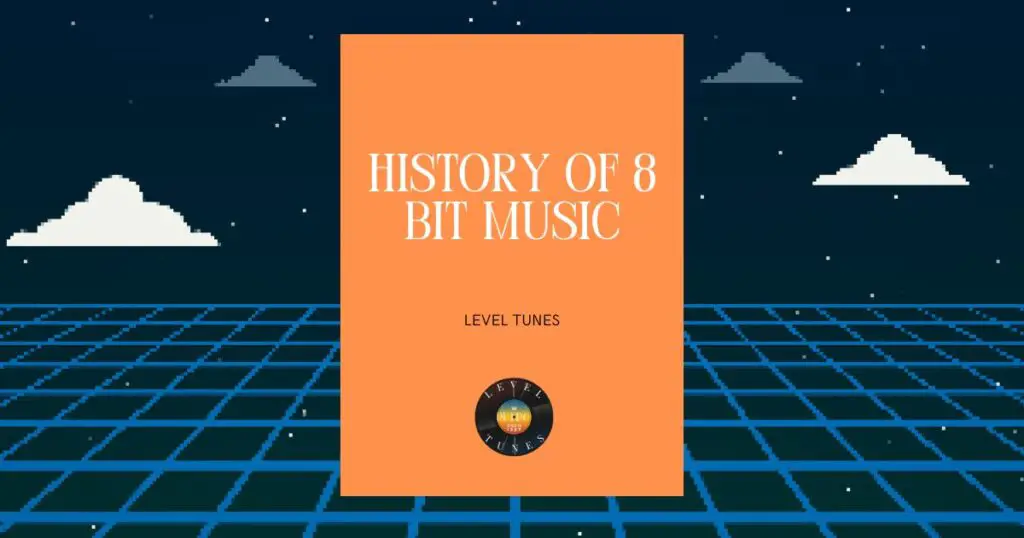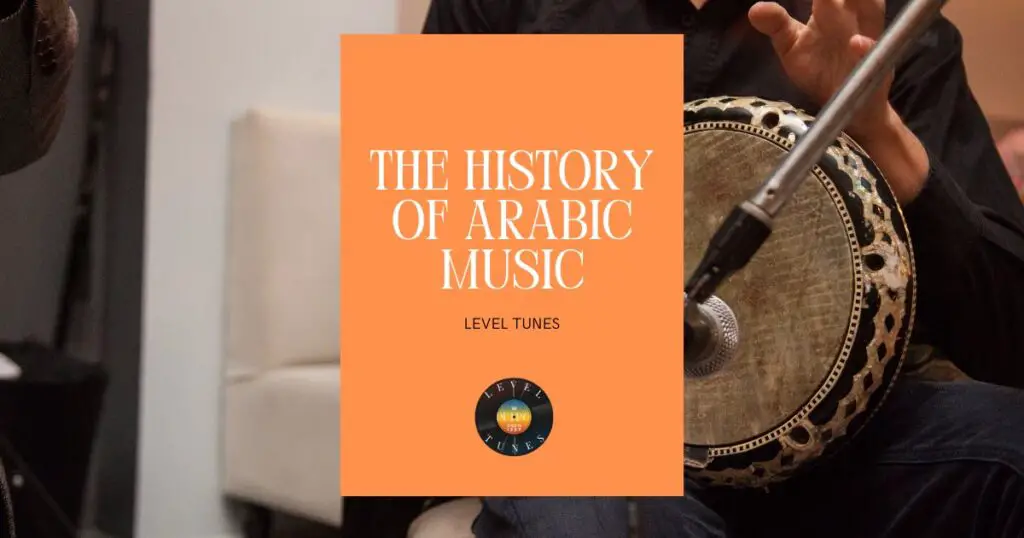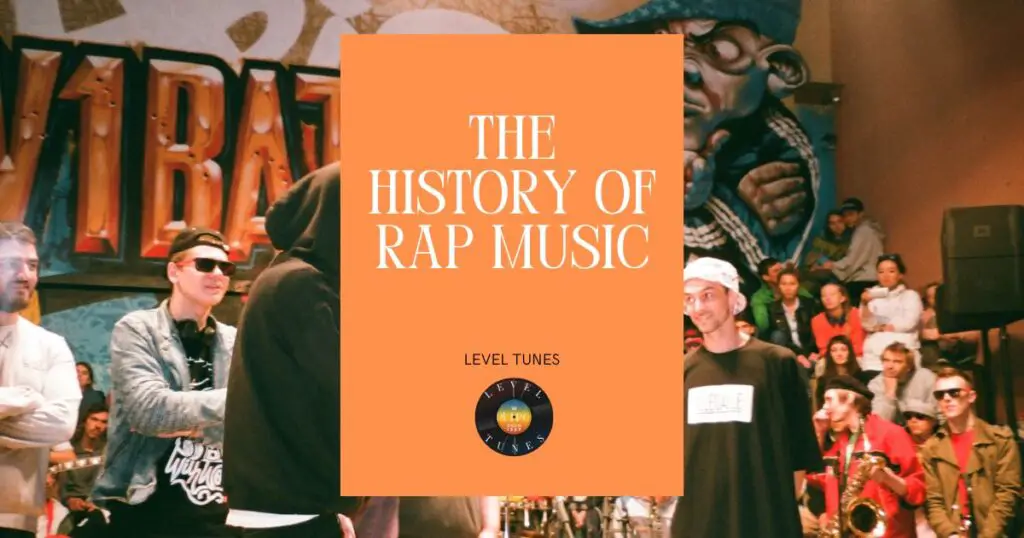Welcome to a nostalgic journey through the history of 8-bit music, where we explore its humble origins, fascinating evolution and lasting influence on modern music culture.
From early gaming consoles like Atari and Commodore 64 to the iconic tunes of Super Mario that still resonate with us today, this post delves into how chiptune – or chip music – transcended from its pixelated roots to become an essential part of electronic music genres.
Key Takeaways
- 8-bit music originated from sound chips used in early gaming consoles like Atari and Commodore 64, which had limited sound capabilities due to their 8-bit processors.
- The rise of chiptune music can be traced back to the iconic Super Mario theme song, leading to its subculture beginnings as an underground sensation in Europe before becoming an established part of modern music culture.
- Chiptune’s influence extended beyond nostalgic memories for retro gamers; it also found its way into movies and TV shows, Demoscene and MOD music, as well as collaborations with contemporary artists. Famitracker played a critical role in revolutionizing how artists approach creating 8-bit inspired music while acting as a tool for those looking into developing their audio programming skills.
- The legacy of 8 – bit music remains significant today through its use in various aspects of modern culture such as electronic music genres, influencing new game soundtracks and invoking feelings of nostalgia among viewers when heard on popular movies or TV shows.
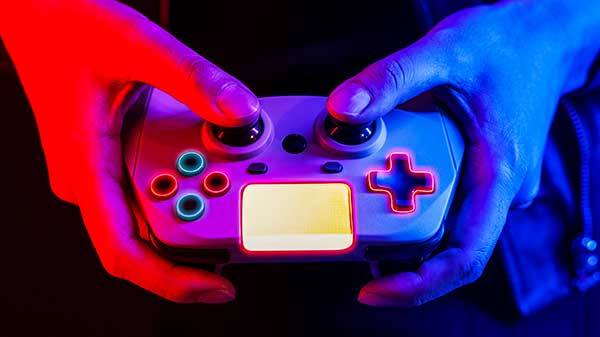
What Is 8-Bit Music And Its Origins
8-Bit music is a type of synthesized electronic music that originated from the programmable sound generator (PSG) sound chips used in early video game systems such as Atari and Commodore 64.
Early Video Game Systems
In the late 70s and early 80s, the world of gaming began to flourish with the introduction of pioneering consoles such as Atari 2600, Magnavox Odyssey², and Intellivision.
These early video game systems were equipped with limited sound capabilities due to their 8-bit processors.
During this period, composers had to work creatively within hardware constraints, resulting in a unique style filled with catchy melodies and simple yet memorable tunes.
For instance, Space Invaders’ rhythmic beats signalled the impending doom of an alien invasion while Pac-Man’s waka-waka sounds are ingrained in most retro gamer’s minds.
The Commodore 64
The Commodore 64, launched in 1982, played a monumental role in the history of 8-bit music. As one of the most successful home computers ever made, selling an estimated 10-17 million units worldwide, it provided a platform for countless talented musicians and composers to develop and experiment with digital sounds.
I recall being fascinated by how such a simplistic piece of hardware could produce such intricate tunes when I first encountered the world of chiptune music on my very own Commodore.
This groundbreaking machine introduced us to artists like Rob Hubbard and Martin Galway who pushed the limitations of what was possible with just three channels of audio available for composition.
Home Computer Music Creation
The revolution in home computer music creation during the 8-Bit era was remarkable. As systems like the Commodore 64 and Atari became more accessible, aspiring musicians had a new platform for experimenting with synthesized electronic music.
One memorable example includes Rob Hubbard, whose innovative compositions on the Commodore 64 laid the groundwork for modern chiptune artists. Thanks to advancements in technology and software, people could convert their home computers into makeshift recording studios where they produced chip music tracks driven by creativity and artistry.
European Development Of 8-Bit Music
As one of the earliest forms of computer music, 8-bit music has a rich and fascinating history.
At that time, home computers such as the Commodore 64 were becoming increasingly popular in Europe, particularly in countries like Germany and England.
One notable example is Chris Hülsbeck, a German composer who created some of the most iconic pieces of music from classic games such as “Turrican” and “Giana Sisters”. Hülsbeck used specialized software called Soundmonitor to create his music on platforms including the Commodore 64.

The Rise And Evolution Of Chiptune
The rise of chiptune can be traced back to the characteristic 8-bit sound of Super Mario, leading to its subculture beginnings and illicit origins as an underground sensation in Europe.
Super Mario And Characteristic 8-Bit Music
One of the most well-known examples of 8-bit music is from the classic video game Super Mario. The characteristic sound of 8-bit music, which emerged in the early days of video games, is characterized by synthesized electronic music created using programmable sound generator (PSG) sound chips.
Super Mario played a significant role in popularizing chiptune or chip music as it’s also known. The simple yet catchy melodies instantly became recognizable to gamers across the globe and remains an iconic theme song to this day.
Chiptune’s Subculture Beginnings
Chiptune music, also known as chip music or 8-bit music, has its roots in the early video game systems of the late 1970s and early 1980s. The Commodore 64 played a significant role in developing chiptune into a subculture, with MOS Technology’s programmable sound generator (PSG) chips taking center stage.
As home computer technology advanced, so did chiptune music creation.
However, it wasn’t until years later that chiptune left behind its genesis as an illicit art form to become an established part of gaming culture. With Super Mario Bros., many people can recall characteristic 8-bit sounds from their childhood days playing on consoles like Atari and Nintendo Entertainment System which became integral to Chiptunes’ rise as a well-known movement linked with retro-gaming nostalgia.
Illicit Origins To Underground Sensation
The history of 8-bit music had its humble beginnings in the early video game systems of the 1980s. However, it wasn’t until the rise of chiptune that this genre gained popularity and recognition beyond just being a mere soundtrack to video games.
Chiptunes evolved from an underground scene with murky origins where enthusiasts created and shared music using modified gaming consoles, initially as an act of rebellion against copyright laws.
Chiptune’s subculture was born out of illicit origins but soon became an underground sensation thanks to its devoted fan base who kept pushing the limits creatively. The evolution of chiptunes is remarkable as it tells an alternate narrative about personal computing hardware, software, and social practices in the ’80s.
Use In Demoscene And MOD Music
Chiptune music’s use in Demoscene and MOD music is a crucial part of its history and evolution. The Demoscene culture emerged from European computer programming enthusiasts, who designed demos to showcase their skills in graphics and sound design.
Chiptune music became integral to the scene, as it allowed artists to create intricate soundscapes with limited technology.
One notable example of chiptune’s influence on Demoscene and MOD music is the work of Tim Wright (also known as Cold Storage), whose tracks for various Amiga game mods have become iconic pieces within the gaming community.
Additionally, many modern-day demoparties feature live performances by prominent chiptune musicians such as Dubmood and Goto80.
Creation Of Famitracker
Famitracker is a free windows tracker that has played a crucial role in the rise and evolution of chiptune music. This software enables users to produce music for chiptune with ease.
Famitracker works by emulating the sound chips found in vintage video game consoles like the Nintendo Entertainment System (NES) or Famicom Console, allowing you to create nostalgic 8-bit sounds akin to old-school games.
Since its creation around 2005 by Japanese programmer “Maxim,” Famitracker has revolutionized how artists approach creating 8-bit-inspired music while also acting as a tool for those looking into developing their skills in audio programming.

The Legacy And Influence Of 8-Bit Music
The legacy and influence of 8-bit music can be seen in various aspects of modern culture, from movies and TV shows to electronic music genres. It has played a significant role in the nostalgia for retro gaming and remains an essential part of the video game industry, influencing new games’ soundtracks.
Use In Movies And TV Shows
As a music lover, you may have noticed the prevalence of classic 8-bit melodies in popular movies and TV shows. The use of these nostalgic tunes is a clever way to invoke feelings of nostalgia and transport viewers back to their childhoods.
For example, the Super Mario Bros.‘ “Ground Theme,” composed by Koji Kondo in 1985, has been used in various films such as Wreck-It Ralph and Pixels.
Overall, the influence of 8-bit music extends far beyond its origin in retro gaming.
Influence On Electronic Music Genres
I can’t deny that 8-bit music has had a significant influence on electronic music genres. The legacy of 8-bit music and its retro-sounding variants have inspired the Chiptune sub-genre of electronic music, which pays homage to the 8-bit era.
Hip hop’s influence on electronic music has also been enormous since the 1970s when it rose from an economic crisis in New York. This development gave birth to several distinct styles such as turntablism, sampling-based production, and scratching at clubs all around the world.
Just like hip-hop, chiptune continues to evolve into a vibrant and diverse genre with a passionate fan base.
Role In Nostalgia And Retro Culture
The popularity of 8-bit music can largely be attributed to its role in nostalgia and retro culture. Its iconic sound is often associated with classic video games from the past, evoking memories of simpler times and childhood experiences.
In addition to its use in media, the nostalgia factor of chiptune music plays an important role in game design. By incorporating familiar sounds from childhood into gameplay, developers can manipulate player experience and create immersive themes.
Collaboration With Contemporary Artists
As 8-bit music continues to grow in popularity, more and more contemporary artists are collaborating with chiptune musicians. This has led to some exciting projects where experimental art meets digital creativity, resulting in unique blends of sound that push the boundaries of what is possible with this genre.
Notable collaborations include Sabrepulse’s work with Japanese artist Yoshitomo Nara, whose artwork often reflects punk music’s ethos of rebellion and defiance. Another example is Anamanaguchi’s collaboration with Hologram Bay, which resulted in a virtual festival featuring performances from both traditional and chiptune musicians.
The Arts Council England has recognized the impact that collaborative projects can have on musical subcultures like chiptune. In response, they’ve launched funding initiatives targeting DIY culture through grants aimed at supporting audio engineering personnel interested in working alongside artists who integrate modern instruments and technology into their productions.
Integration Of Modern Instruments And Technology
As technology continues to develop, so too does the world of 8-bit music. With modern instruments and digital tools becoming more advanced, chiptune creators now have even more options available to them when it comes to synthesizing their own unique tracks.
One example of this can be seen in the use of live instruments alongside synthesized sounds in groups like Anamanaguchi who combine guitars and drums with their signature 8-bit sounds.
Another notable example is C418’s renowned soundtrack for Minecraft- an album created entirely through digitally generated noise via computer equipment.
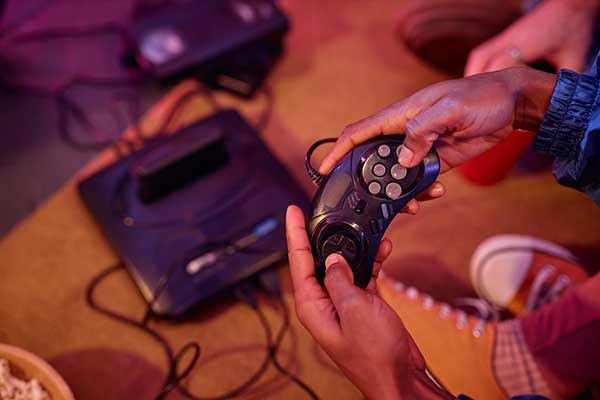
How To Make 8-Bit Music
To make 8-bit music, you’ll need to start with the right tools and software for creating chiptune music – don’t worry, we’ve got you covered.
The Basics Of Creating 8-Bit Music
Are you interested in making 8-bit music? Here are the basics you need to know:
- Understand waveforms: 8-bit music is created using simple waveforms like square, triangle, and noise. Each waveform has its unique sound, so experiment with them to find your preferred style.
- Learn how effects work: Effects like vibrato, tremolo, and arpeggio can add character to your tunes. Experiment with different combinations to create something unique.
- Get software for creating chiptune music: Your computer or phone can be used to create authentic chiptune music. Some popular free software includes FamiTracker, LSDJ (for Game Boy), and MilkyTracker (for Amiga and Commodore 64).
- Familiarize yourself with the hardware: If you want a more authentic sound, try using a console like NES or Game Boy along with a sound chip emulator.
- Follow 8-Bit Music Theory on YouTube: This channel provides tutorials on music theory and composition specifically for creating chiptune music.
- Experiment and have fun: The beauty of 8-bit music is that there are no rules. So don’t be afraid to experiment with different techniques and sounds until you find what works best for you.
Tools And Software For Creating Chiptune Music
If you’re a music lover interested in making 8-bit music, there are various tools and software available to help bring your chiptune creations to life. Here are some popular options:
- BeepBox: This online chiptune editor allows users to create, share, and listen to 8-bit music directly in their browser with an easy-to-use interface.
- Scratch 8-Bit Maker: Developed by MIT Media Lab, this free tool lets users mix sounds and beats using a drag-and-drop interface, adding an interactive element to the creative process.
- Online Sequencer: This web-based sequencer provides a range of sounds and instruments for creating authentic 8-bit music that can be shared on social media.
- Famitracker: A free program that emulates the sound chip of the Nintendo Entertainment System (NES), allowing users to create chiptune music within a standard DAW.
- MusicLab: Offers a range of virtual instruments inspired by classic synthesizers like the Roland TB-303 and Yamaha DX7, which can be used to add retro elements to modern electronic productions.
- LSDJ: Popular among Game Boy musicians, LittleSoundDJ is a cartridge-based software that allows users to synthesize audio for Game Boy games while also functioning as a standalone music creation tool.
With these tools and more at your disposal, you can start experimenting with different sounds and styles of 8-bit music production right away!
New Techniques And Styles
When it comes to creating 8-bit chiptune music, there are always new techniques and styles to explore. As technology advances, more tools and software become available for composers to experiment with.
One way to stay fresh is by learning different composition styles that can bring a unique sound to your tunes.
Another technique is using modern software plugins and hardware in combination with traditional chip sounds. This has led some musicians to create hybrid styles of electronic music that incorporate both old-school 8-bit sounds and contemporary production methods.
It’s important not just rely on the same tricks used by early composers from the era due to limited capabilities of each chip for their creations but rather try out these latest techniques; this way, you’re sure your chiptune music stays relevant while still honouring its rich history.
Conclusion
In conclusion, the history of 8-bit music is a fascinating journey through time. From early computer technology to today’s modern software, we have seen how this genre has evolved over the years.
It all began with simple sound chips that created iconic theme songs for classic video games such as Super Mario and Donkey Kong.
The legacy of 8-bit music can be heard everywhere from TV shows and movies to contemporary art exhibitions. The rough, nostalgic sound of retro gaming consoles still holds a special place in our hearts, reminding us of simpler times gone by.
So whether you’re looking to relive your childhood memories or explore one of the most innovative eras in music production history, there’s no denying that 8-bit tunes will always hold a special place in our musical heritage.
FAQs:
What is 8-bit music and when did it become popular?
8-bit music refers to the sound produced by early video game consoles and computers, characterized by its simplistic, electronic tones. It became popular in the 1980s with the release of several iconic video games such as Pac-Man, Space Invaders, and Super Mario Bros.
Who are some notable composers or performers within the realm of 8-bit music?
Some notable names within the world of 8-bit music include Hirokazu Tanaka (the composer for many Nintendo titles), Rob Hubbard (known for his work on Commodore 64 games), and Tim Follin (a British composer who worked on various platforms including ZX Spectrum).
How has technology impacted the evolution of 8-bit music over time?
As technology continues to advance, so has the ability to recreate and manipulate sounds associated with 8-bit music using modern digital audio software. This has led to a resurgence in popularity among musicians who seek to incorporate these nostalgic sounds into their contemporary compositions.
What role does nostalgia play in our continued fascination with 8-bit music?
Many people associate memories from their childhood or teenage years with classic video games that featured memorable soundtracks composed of chiptune-style melodies. As a result, there is often an emotional connection that forms between listeners and this genre of music that makes it timeless despite its age-old origins.

